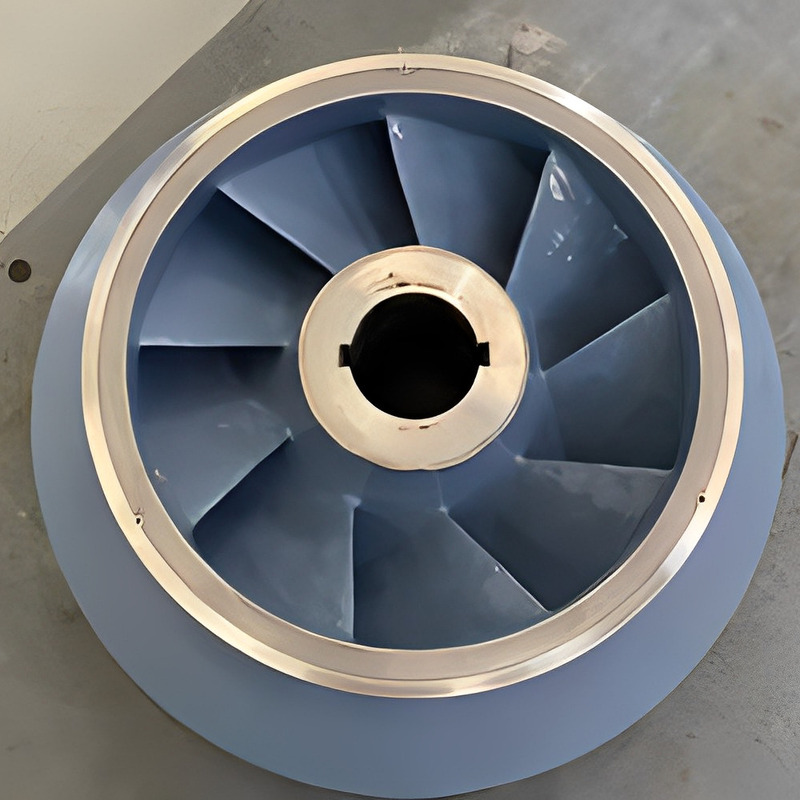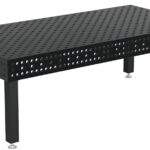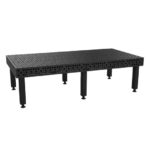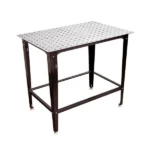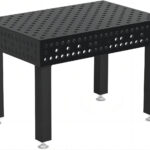At KT-FOUNDRY, we're proud of our cast steel expertise. This metal has changed manufacturing for over 250 years. Benjamin Huntsman found the way to make it in 1751.
He poured molten steel into molds. This made a strong, pure material. It's great for many uses, like trains, buildings, mining, and more.
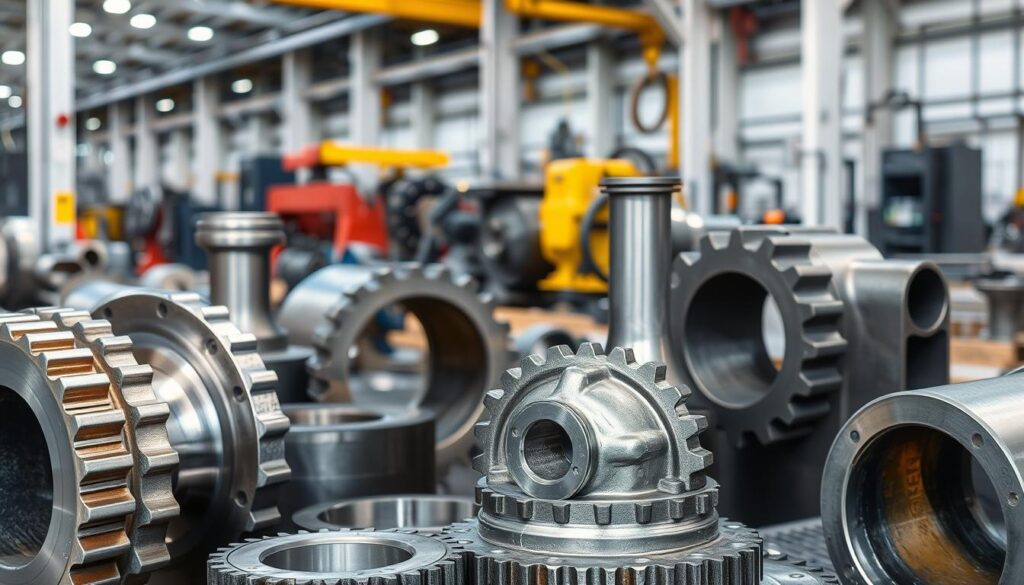
Our team makes top-notch cast steel parts. We know how to make them just right for each client. This ensures they get exactly what they need.
Looking for precise castings or big parts? KT-FOUNDRY can make it happen. We help from start to finish, making sure every part is perfect.
Understanding Cast Steel and Its Formation Process
Cast steel, also known as crucible steel, is made by heating iron in a crucible. This process needs skilled metalworkers because steel melts at a higher temperature than iron. At KT-FOUNDRY, we use advanced methods for precise temperature control and top-notch casting.
Modern Steel Casting Methods
Today's casting methods use temperatures over 1600°C. This lets us mix different alloys with iron. Our team knows the latest techniques, making sure we create high-quality cast steel parts.
Temperature Requirements and Melting Points
The melting point of steel is much higher than iron's. This means we need special equipment and watch the casting foundry process closely. We use the latest tech to control the temperature, making sure the pouring molten steel turns out right.
"The solid shell thickness grows approximately with the square root of time, at about 20 millimeters after one minute, 40 millimeters after four minutes, and 60 millimeters after nine minutes during steel solidification."

We're always pushing to be better at making cast steel. KT-FOUNDRY is leading the way, giving our clients the best products.
Cast Steel vs Cast Iron: Key Differences
Choosing between cast steel and cast iron affects a product's performance and cost. Both materials are used in many industries. Knowing their differences helps in making better choices.
The main difference is in carbon content. Cast steel has less than 2% carbon. On the other hand, cast iron has more than 2% carbon. This affects their physical properties and how well they cast.
| Characteristic | Cast Steel | Cast Iron |
|---|---|---|
| Mechanical Strength | Superior mechanical properties, including higher tensile strength and better impact resistance. | Generally lower mechanical strength, but better vibration damping and wear resistance. |
| Weldability and Workability | Easier to weld and work with, providing greater design flexibility for complex shapes and hollow cross-sections. | Relatively more challenging to weld and work with, limiting design options. |
| Machinability | Requires more effort to machine compared to cast iron. | Easier to machine, making it a more cost-effective choice for mass production. |
| Cost | Generally more expensive due to the higher carbon content and advanced manufacturing processes. | More affordable, making it a viable option for cost-sensitive applications. |
Choosing between cast steel and cast iron depends on the application's needs. This includes carbon content, physical properties, casting performance, and cost comparison. At KT-FOUNDRY, we offer both to meet our customers' diverse needs. This ensures they can make the best choice for their projects.

Essential Properties of Cast Steel
At KT-FOUNDRY, we're proud to create cast steel products that show off the material's best qualities. Cast steel is known for its high tensile strength, toughness, and hardness. This makes it a great choice for parts that face a lot of stress and use.
Mechanical Strength and Durability
Cast steel's mechanical strength is a big plus. It can handle loads and impacts well, thanks to its tensile strength over 150,000 psi. This means our cast steel parts can last long, even in tough industrial settings.
Corrosion and Wear Resistance
Cast steel also stands out for its corrosion resistance and wear resistance. Its mix of materials and how it's made help it fight off corrosion. This means our cast steel parts can last longer and need less upkeep.
Weldability and Workability
Cast steel is also easy to weld and work with. This makes it simple to modify or repair parts on-site. Its workability lets us make complex shapes, giving us more design options.
At KT-FOUNDRY, we use cast steel's great properties to make parts that meet high standards. Our focus on quality and new ideas means our cast steel products always perform well. They offer reliability and value to our customers in many industries.
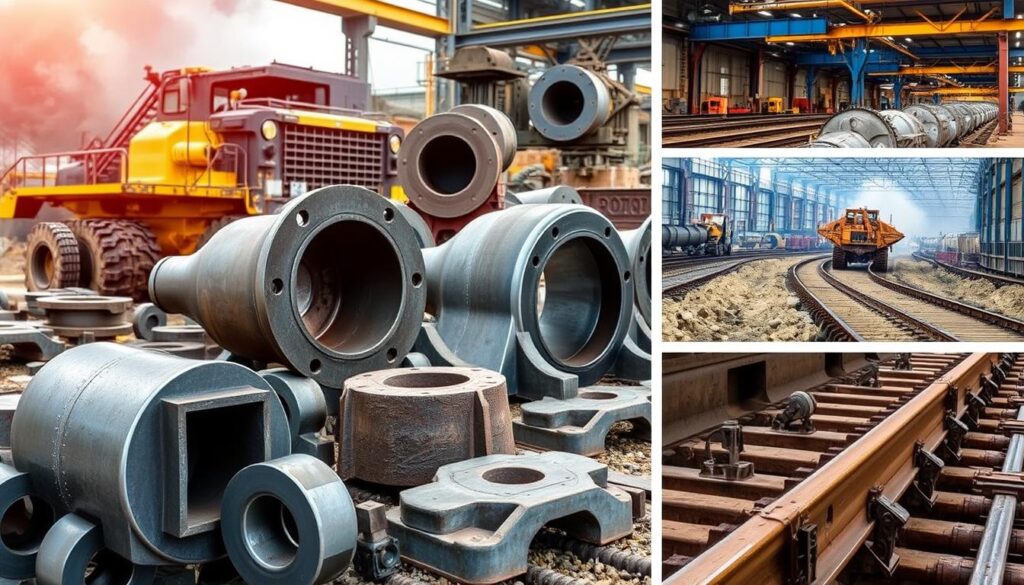
Types of Cast Steel Based on Carbon Content
Cast steel is a versatile material used in many fields. It's mainly sorted by its carbon content. Knowing the different types of cast steel is key to understanding their properties.
| Type of Carbon Steel | Characteristics | Primary Applications |
| Low Carbon Steel | Contains low carbon content (≤ 0.25%), offers high ductility and weldability, but has lower strength. | Used in automotive body parts, construction materials, thin sheets, and piping where strength needs are moderate. |
| Medium Carbon Steel | Moderate carbon content (0.25%–0.6%), balances strength and toughness, can be heat-treated for enhanced properties. | Ideal for machinery parts, shafts, gears, and fasteners that require a good balance of strength and toughness. |
| High Carbon Steel | High carbon content (0.6%–1.0%), provides high hardness but lower ductility, usually requires quenching. | Commonly used in cutting tools, springs, wear-resistant parts, and applications needing high hardness. |
| Ultra-High Carbon Steel | Very high carbon content (>1.0%), extremely hard but brittle, generally used in hardened tools. | Typically used in specialized tools, wear-resistant components, and high-strength tool materials. |
| Low-Alloy High-Strength Carbon Steel | Contains small amounts of alloying elements (e.g., manganese, molybdenum) to improve strength and corrosion resistance. | Widely used in structural components for construction, bridges, automotive parts, and heavy equipment. |
| Free-Cutting Carbon Steel | Contains elements like sulfur or lead to enhance machinability, suitable for applications with lower precision requirements. | Used in manufacturing screws, bolts, nuts, and small mechanical parts that require efficient machining. |
At KT-FOUNDRY, we're proud to make all types of carbon cast steel. We adjust the mix to fit our clients' needs. This way, we ensure they get the best cast steel for their projects.
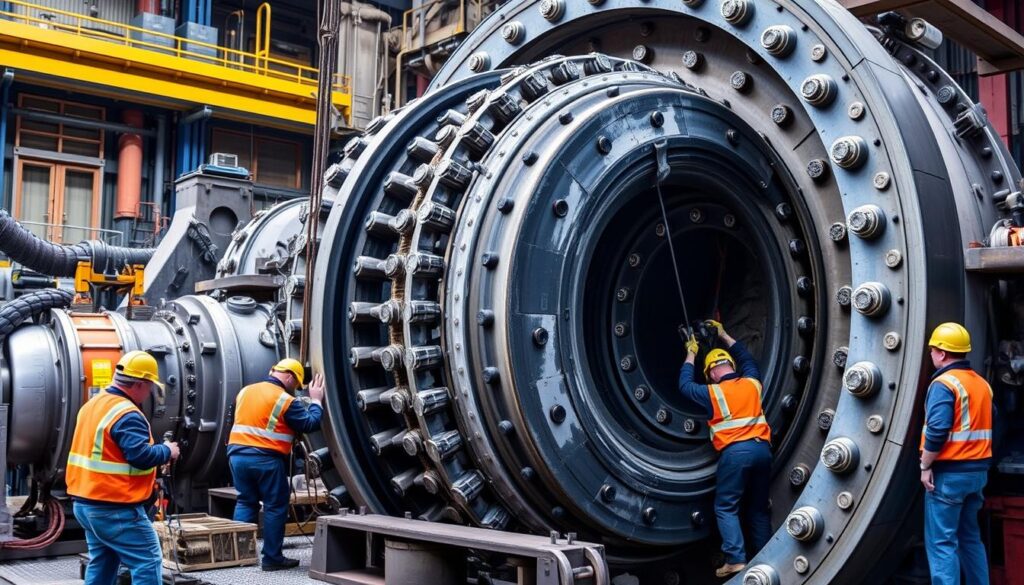
Alloy Steel Variations and Their Unique Properties
Alloy steel is a versatile material in the steel world. It has special properties because of added elements. This makes it great for many industrial uses. Let's explore the different types of alloy steel and what makes them special.
| Type of Alloy Steel | Characteristics | Primary Applications |
| Low Alloy Steel | Contains a low amount of alloying elements (<5%), improves strength, toughness, and corrosion resistance, cost-effective. | Used in construction structures, automotive parts, bridges, and pipelines requiring strength and toughness. |
| High Alloy Steel | Contains a high level of alloying elements (>5%), often used for specific properties like high temperature and corrosion resistance. | Commonly used in aerospace, chemical processing, nuclear industries, and other specialized applications. |
| Stainless Steel | High chromium content (typically >10.5%), offers excellent corrosion resistance, attractive appearance, easy to clean. | Widely used in food processing, medical devices, architectural decor, chemical processing, and kitchenware. |
| Heat-Resistant Steel | Maintains strength and stability at high temperatures, usually contains chromium, nickel, or molybdenum for heat and oxidation resistance. | Ideal for boilers, gas turbines, engines, heating equipment, and refining units. |
| Wear-Resistant Steel | High manganese or silicon content provides excellent wear resistance, suitable for abrasive environments. | Used in mining equipment, construction machinery, crusher liners, and transportation equipment requiring durability. |
| Spring Steel | High elastic limit and strength, typically alloyed with silicon or manganese for increased elasticity and toughness. | Used in springs, suspension systems, shock absorbers, and other components needing elasticity and fatigue resistance. |
| Tool Steel | High carbon and alloy content, delivers high hardness and wear resistance, typically heat-treated to increase durability. | Commonly used in cutting tools, molds, drill bits, and other high-hardness tools. |
| Carburizing Steel | Surface-hardened by carburizing, with a tough core for a combination of surface hardness and impact resistance. | Used in gears, bearings, cams, and sprockets requiring wear resistance and impact durability. |
At KT-FOUNDRY, we're experts in making alloy steel castings for many industries. We focus on innovation and quality. This means we provide the perfect alloy steel solutions for your needs.
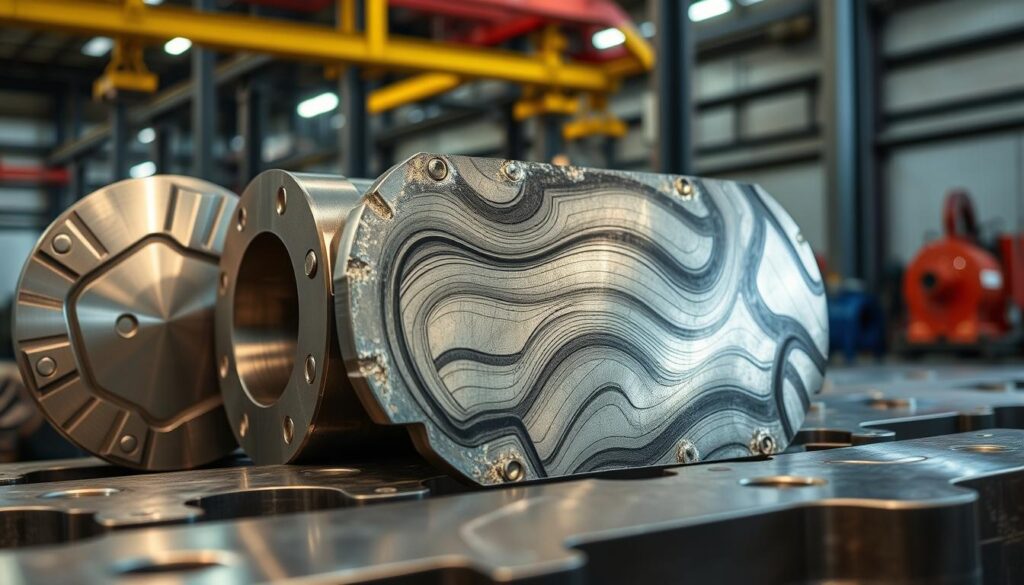
Manufacturing Advantages of Cast Steel
At [https://kt-foundry.com/ductile-iron-casting/], we know how important design flexibility, metallurgical variability, and structural strength are. That's why cast steel is a top pick for many industries. It offers benefits that make it both versatile and affordable.
Cast steel stands out for its design flexibility. It can be molded into complex shapes and hollows. This lets designers get creative and make new product designs. The metallurgical variability also means you can adjust the chemical makeup and heat treatment. This ensures the product fits the exact needs of each use.
Cast steel is also an isotropic material, meaning it has the same structural strength in every direction. This makes it a solid choice for tough tasks. Plus, it's priced well and delivered quickly, making it a top choice for many manufacturing needs.
| Advantage | Benefit |
|---|---|
| Design Flexibility | Ability to create complex shapes and hollow cross-sections |
| Metallurgical Variability | Customization of chemical composition and heat treatment |
| Structural Strength | Uniform strength in all directions as an isotropic material |
| Competitive Pricing | Cost-effective solution for manufacturing |
| Shorter Delivery Times | Efficient production and supply chain |
At KT-FOUNDRY, we use these benefits to provide top-notch, affordable cast steel solutions. We tailor them to meet the special needs of our clients in different industries.
Industrial Applications and Use Cases
Cast steel is key in many industries, known for its strength, durability, and flexibility. It's used in railways, aerospace, construction, and mining. These components are vital for the global economy.
Railway and Transportation
In the railway and transportation world, cast steel is used for parts like side frames, wheels, and couplers. It's strong and can handle wear and tear well. This makes it perfect for locomotives and rail cars.
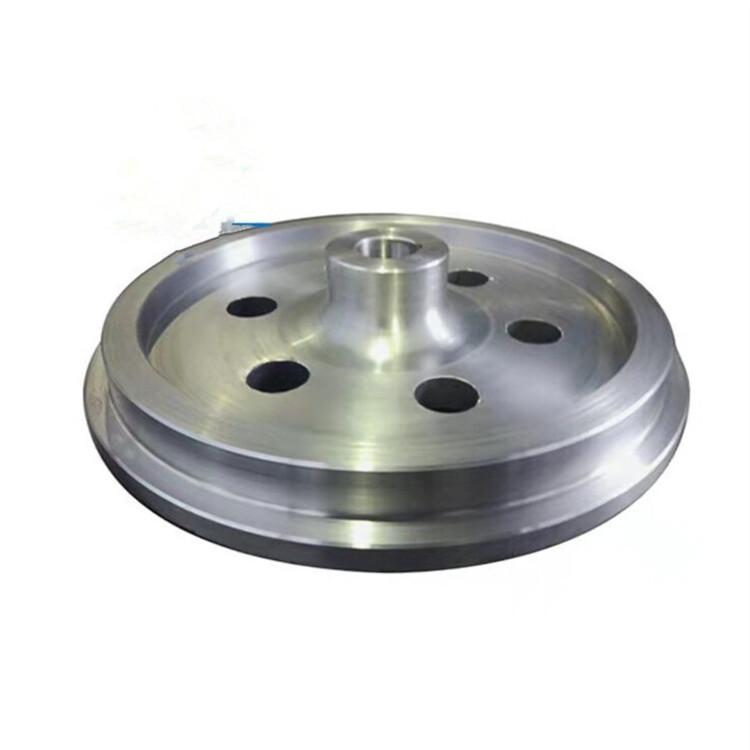
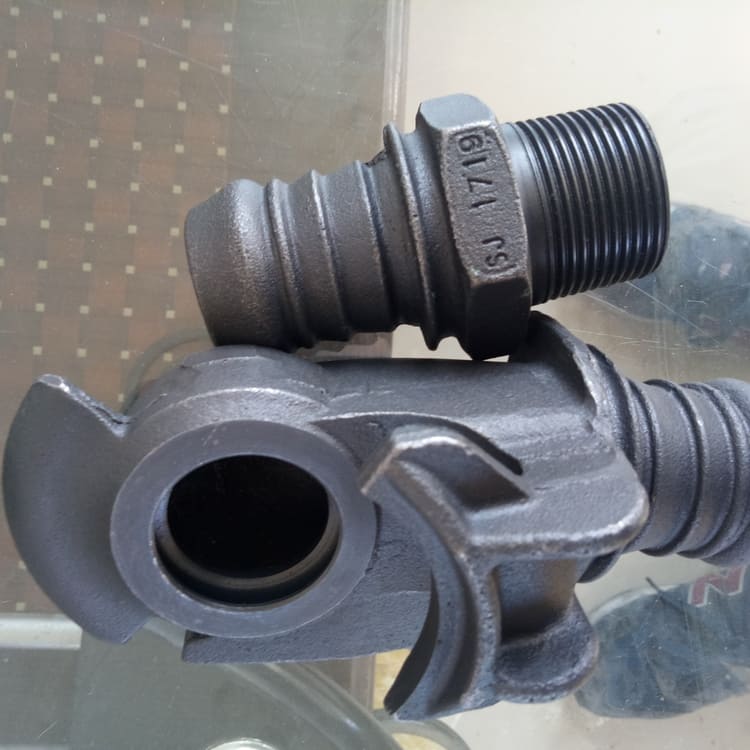

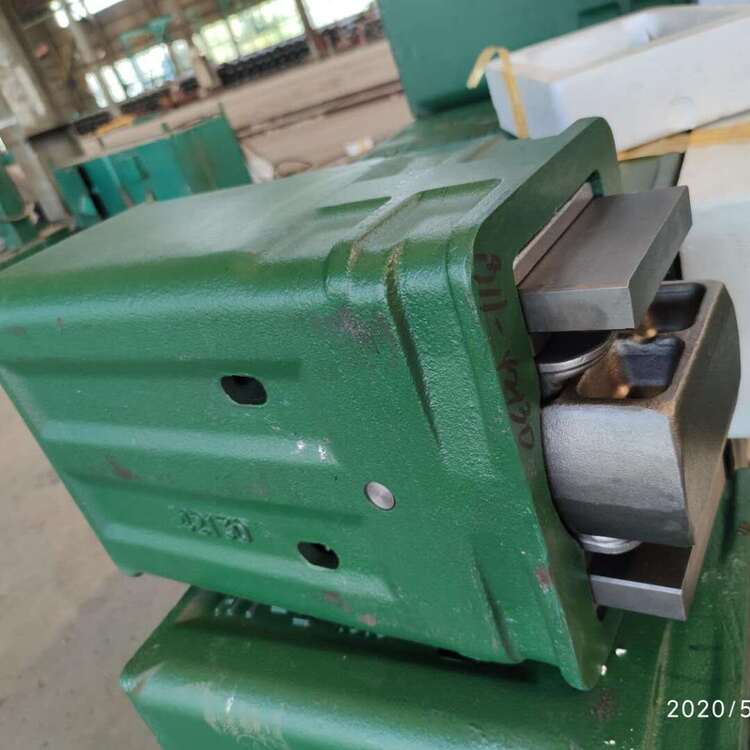
Construction and Mining Equipment
The construction and mining sectors need cast steel for tough tools and machinery. It's used in excavators, bulldozers, rock crushers, and drilling rigs. Cast steel ensures these machines work well and last long, even in tough conditions.
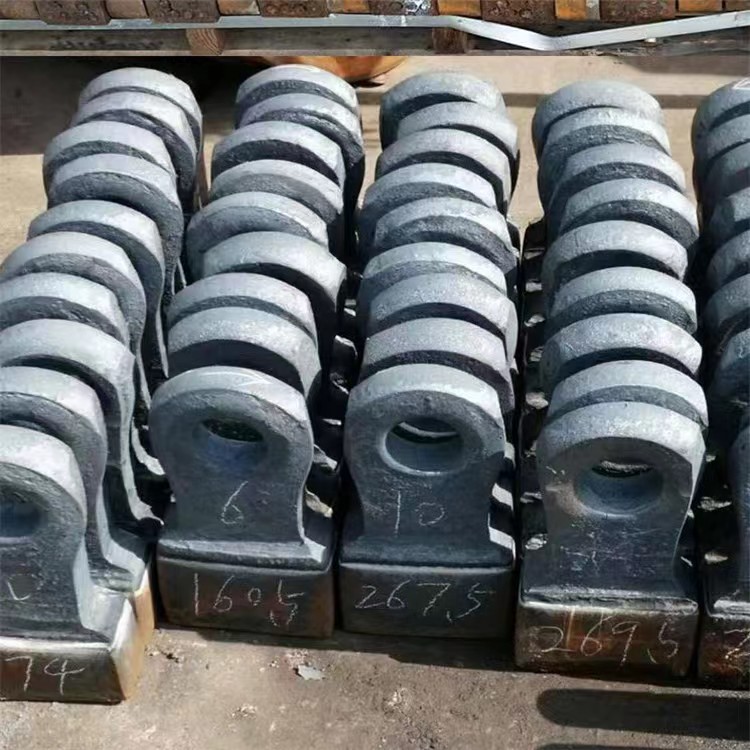
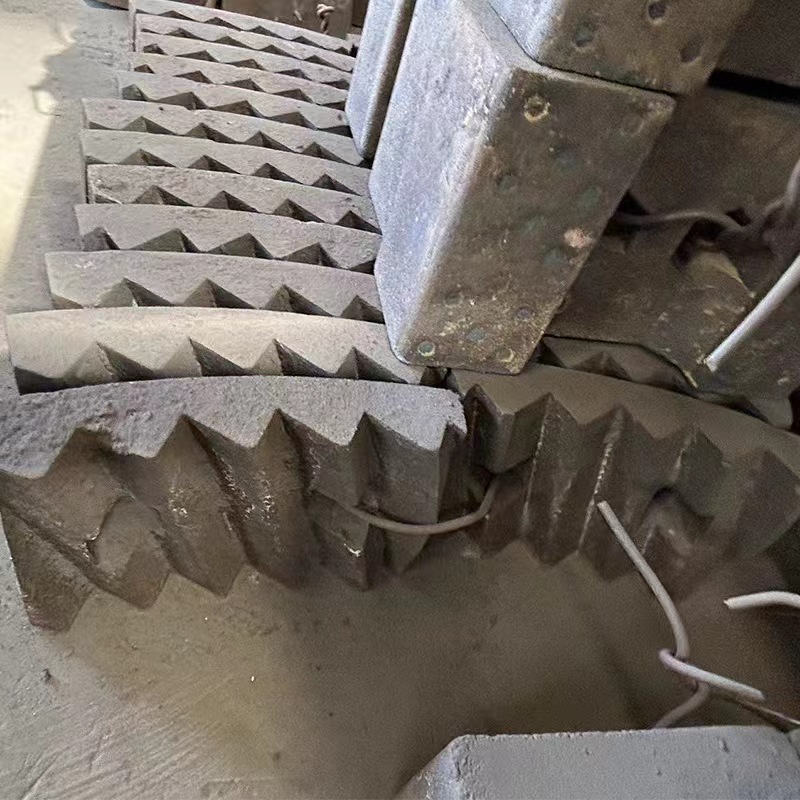
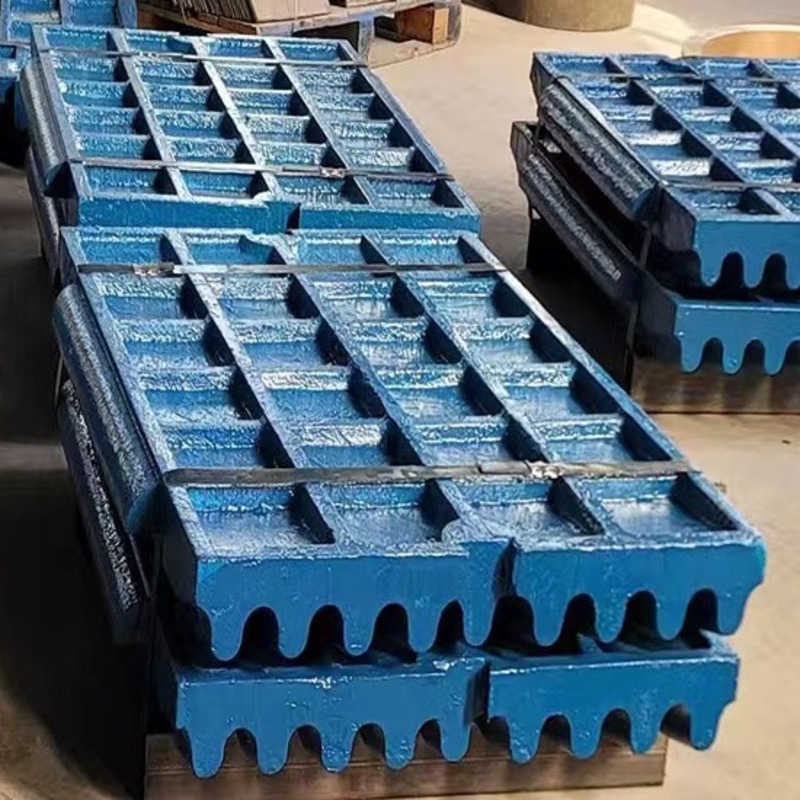
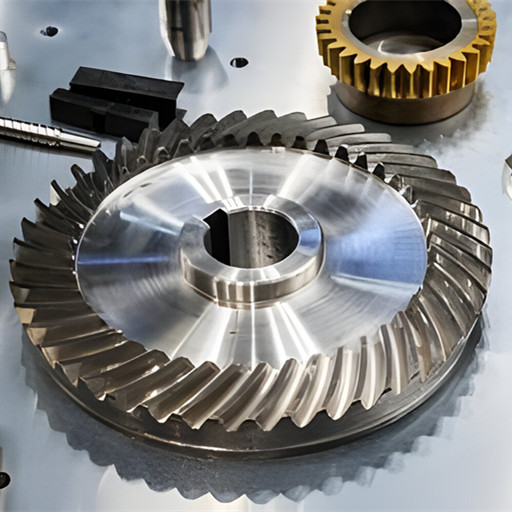
Aerospace and Defense Components
The aerospace and defense fields use a lot of cast steel. It's in engine brackets, brake support plates, and structural parts. Its strength, light weight, and resistance to corrosion are crucial for these high-tech areas.
At KT-FOUNDRY, we're proud to offer cast steel solutions for various industries. We focus on quality, innovation, and improvement. Our cast steel parts meet our customers' high standards.
| Industry | Cast Steel Applications | Key Benefits |
|---|---|---|
| Railway and Transportation | Side frames, wheels, couplers | Mechanical strength, wear resistance |
| Construction and Mining | Excavators, bulldozers, rock crushers | Durability, high performance |
| Aerospace and Defense | Engine brackets, brake support plates | Strength-to-weight ratio, corrosion resistance |
"Cast steel has become an indispensable material across a wide range of industries, offering unparalleled strength, durability, and versatility."
Design Flexibility and Structural Benefits
At KT-FOUNDRY, we're experts in cast steel design. We make parts with complex shapes and cross-section parts. This flexibility, along with cast steel's isotropic nature, gives our products exceptional structural strength and reliability. We use cast steel to improve our clients' projects' efficiency and performance.
Cast steel's versatility lets us make parts for many industries. This includes transportation, construction, aerospace, and defense. Our knowledge of cast steel helps us tailor its benefits for each project. This ensures our clients get what they need.
| Property | Ductile Iron | Cast Steel |
|---|---|---|
| Carbon Content | 3.0%-3.9% | 0.08%-0.60% |
| Yield Strength | 40 ksi | 36 ksi |
| Poisson's Ratio | 0.275 | - |
| Weldability | Moderate | Excellent |
| Corrosion Resistance | Superior | Good |
We use cast steel's unique properties to offer structural strength and reliability. This ensures our clients' projects reach their highest potential.
"The design flexibility and structural benefits of cast steel are unparalleled, allowing us to create components that meet the most demanding requirements of our clients."
Conclusion
Cast steel is incredibly strong, durable, and flexible in design. It's a key material in many industries, like railways and aerospace. It's chosen for its high performance and reliability in critical applications.
At KT-FOUNDRY, we specialize in making cast steel. We focus on quality and meeting our clients' needs. Our goal is to exceed expectations and drive innovation in various fields.
Cast steel is becoming more important as manufacturing needs grow. Its benefits, along with KT-FOUNDRY's expertise, make it essential for the future. It helps us create new products and technologies, shaping the future.


